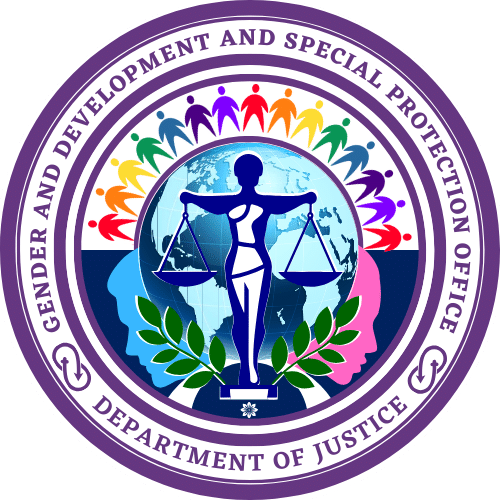Maayo nga aga, mga abyan! (Good morning to all.)
Nalipay guid ako nga ari kamo d’ tanan. (I am happy you are all here.)
The delivery of justice is a complex and difficult challenge beyond the power of a single institution or person to address.
The events of these past two weeks attest to this.
As a backgrounder, in 2013, the Philippine Congress enacted into law Republic Act No. 10592 which amended Articles 29, 94, 97, 98 and 99 of our Revised Penal Code.
The intent of the Legislature in passing this law is without a doubt laudable.
Our lawmakers sought to increase the time credits and allowances in favor of certain prisoners on account of their good conduct while in jail.
Such intent jibes with one of the avowed purposes of our penal system – the reformation and rehabilitation of those who violated our laws but who remain morally salvageable, and their expeditious reintegration into mainstream society.
To a lesser extent, the law also meant to help ease the high congestion rate of our jails and penitentiaries.
After the passage of the said law, the then leadership at the Departments of Justice and of the Interior and Local Government issued the rules and regulations for its implementation or IRR.
"...this phenomenon which unfolds up to this day brings to fore how legal issues and problems, and our responses to them, cut across the supposedly neat demarcations which presumably separate the three great branches of government and the institutions within each of these branches."
The Legislature precisely tasked the DOJ and the DILG to work on this IRR because for the most part, it is the bureaus and agencies under these departments which manage prison facilities where those accused on preventive imprisonment, and convicts serving sentences, are housed.
The IRR – completed in 2014 – nevertheless provided for its prospective application.
What that meant was that only those on preventive imprisonment or those serving sentences after the effectivity of the law in 2013 may benefit from the increased and expanded time credits and allowances under RA 10592.
Such prospective application was justified on, among others, the complexity of computing the increased time credits and allowances, and the creation only for the first time of a Screening Committee tasked with the implementation of the amendatory law.
Such prospective application however ran counter to Article 22 of the Revised Penal Code which mandates the retroactive application of penal laws in so far as they benefit those guilty of a felony who are not habitual delinquents.
And it is precisely because of this that in 2014, a legal challenge to the prospective application of the increased time allowances was raised before the Supreme Court.
In June of this year, the Supreme Court En Banc declared as superior the substantive rights of detention and convicted prisoners over the procedural and administrative restructuring instituted by RA No. 10592.
“We feared that the IRR as presently crafted has created a backdoor to freedom for those who have committed crimes deserving universal condemnation.”
The Highest Court of the land therefore invalidated the prospective application of the grant of increased time allowances, and ordered that the law be given retroactive effect.
The Bureau of Corrections, a line agency of the DOJ, estimated around eleven thousand persons deprived of liberty (PDLs) to be potential beneficiaries of the retroactive application of the law on increased time allowances.
Two weeks ago, we all heard that a former local government official convicted of having raped a college student from the premier state university and killing her companion may be among the eleven thousand PDLs who could potentially benefit from the retroactive application of the law.
Within hours, a sudden burst of public outcry followed. Up to this day, public discourse on the law, its interpretation, and its impact continues to unfold.
One legislative act;
“We believe such an exclusion was espressly and intentionally written into the law by our lawmakers upon the conscious realization that in the most reprehensible of crimes, punishment and the deterrence of crimes must take precedence over the objective of rehabilitation.”
Its IRR running counter against rudimentary principles of criminal law;
A judicial interpretation requiring obedience;
And an unprecedented public interest in how the law, its construction and implementation, ought to be.
The phenomenon that started in 2013 is a classic example of the complexity of law-making, its implementation and interpretation.
More importantly, this phenomenon which unfolds up to this day brings to fore how legal issues and problems, and our responses to them, cut across the supposedly neat demarcations which presumably separate the three great branches of government and the institutions within each of these branches.
It pushes into our consciousness the realization that despite the institutional independence written in our laws, the public indictment against all of us involved in the delivery and administration of justice is always singular.
In matters of great importance to the public, those of us tasked with the dispensation of justice rise and fall as one.
But more than the complexity of the issues involved, this unfolding phenomenon has shown the remarkable resilience of justice sector institutions and the even more remarkable cooperation between and among those of us who comprise it.
Soon after the flaws in the implementing rules and regulations of RA No. 10592 became apparent, we at the Department of Justice saw it fit to review the IRR and suspend in the meantime the processing of increased time allowances.
We feared that the IRR as presently crafted has created a backdoor to freedom for those who have committed crimes deserving universal condemnation.
The very real danger posed to the peace of the community and public order by the early release of those whose capacity for vengeance and for re-inflicting pain upon victimized families has compelled us not only to review and plug possible loopholes in the IRR, but also to put a temporary halt to the process that magnifies such risk.
But this suspension pending completion of the review of the law’s IRR presented both legal and logistical problems.
Foremost, the Supreme Court’s Decision last June has commanded the retroactive implementation and re-computation of the increased time allowances.
“They involve not only the life and liberty of certain individuals; they also implicate the well-being of our families and the peace and order of our communities; they define our collective priorities and wisdom, and our conscience as a people.”
Secondly, the law itself requires the Secretaries of Justice and of the Interior and Local Government to promulgate its rules and regulations.
By implication, the review and amendment of such IRR must perforce be undertaken by both Secretaries.
But our swift response to these twin challenges is testament to how coordinated action and a strong will to cooperate can take primacy over bureaucratic checks and delays.
Immediately, we informed the Supreme Court, through the Honorable Chief Justice, of our intended action.
This we did not so much out of fear of being held in contempt but rather out of deep respect for the Highest Court of the Land.
The Chief Justice, on the other hand, showed his kind understanding and quietly encouraged us to proceed.
We also sought, and expeditiously obtained, the concurrence of the Secretary of the Interior and Local Government to the Joint Department Order creating a joint review committee and directing the temporary suspension of processing of time allowances.
At this very moment as we speak, a joint review committee formed by the DOJ and the DILG has convened in Manila to study the ramifications of the Supreme Court’s directive to retroactively apply RA No. 10592.
Its work will correct any possible flaws in, and recommend possible amendments to, the existing IRR, and establish the institutional checks and balances to ensure the expeditious and correct implementation of the law.
This joint review committee is mandated to, among others, spell out in the IRR the exclusions intended by the law.
These exclusions bar those who have committed the most atrocious and reprehensible crimes against our people from availing themselves of the benefits of the law.
We believe such an exclusion was espressly and intentionally written into the law by our lawmakers upon the conscious realization that in the most reprehensible of crimes, punishment and the deterrence of crimes must take precedence over the objective of rehabilitation.
The inclusion of this important provision in the IRR – where it is now glaringly absent – is necessary to give effect to the legislative intent.
This joint committee is likewise mandated to complete its task in ten (10) working days so as not to unduly delay the release of PDLs who rightfully deserve to benefit from the law’s laudable objective.
The stakes in the administration and delivery of justice are grave and manifold.
They involve not only the life and liberty of certain individuals; they also implicate the well-being of our families and the peace and order of our communities; they define our collective priorities and wisdom, and our conscience as a people.
Tungod sini, kinang’lan ta, sang madasig nga pagbuhat sang insakto. (Because of this, we need to do good with utmost haste.)
These stakes impress upon us the need for swift and correct action.
Anything less contributes to the perpetuation of an injustice, the very injustice we are all mandated to correct and fight against.
With stakes these significant, communication, coordination and cooperation among us become imperative.
The events of these past two weeks have shown us how those of us – the current stewards of the institutions we lead and serve – have responded to that imperative.
It is our collective hope therefore that our most recent actions guide and inspire you as you work together in building and strengthening Bacolod City as a Justice Zone.
“These stakes impress upon us the need for swift and correct action.”
The challenges we all face in the delivery and administration of criminal justice are often difficult, complex and pressing.
They require solutions that are comprehensive but nuanced.
Of course, we can attempt to formulate and implement such solutions individually and separately.
But the events of these past two weeks have shown us a glimpse of how powerful coordinated action can be.
Kabay pa nga may matun-an kita. (I hope we learn something from this.)
May we all derive lessons from this experience, and continually harness our collective strength and power as we push forward our bayanihan para sa katarungan.
Madamo guid nga salamat sa pagpamati. (Thank you for listening.)
Good day, everyone.








